The ‘leisure with a lanyard’ approach is common in meetings marketing, but this could quickly lead your travel & tourism organization down a rabbit hole of wasting money and time and still not reaching the right planners. And when you do, your message just doesn’t land with the audience.
With 100+ years of industry expertise, our team at Digital Edge likes to think we know a thing or two (or three… or four…) about driving business for destination organizations, convention centers, hotels and beyond. Learn from us so your team doesn’t make these terrible, awful, no-good, very bad meetings marketing mistakes. We surveyed our content, creative, media and account management departments, and here are their top nine no-nos.

1. Keeping Your Sales & Marketing Teams Siloed
Digital Edge was founded with a mission to close the gap that can exist between sales & marketing teams of destination organizations, so of course, this no-no tops our list of meetings marketing mistakes. When messaging, sales materials and brand identity are fastened together, everyone benefits. When they aren’t, organizations could be left with unsupported sales teams, inconsistent messaging and off-brand materials that could hinder the effectiveness of the sales process and lead to an overwhelmed marketing team struggling to keep up with the sales needs on top of their priorities. It’s important for sales & marketing teams to collaborate internally on creative and content marketing needs, and if you need the strategies to unify these two departments within your organization, that’s where Digital Edge comes in.
2. Ignoring AI
We get it — there’s a lot to learn when it comes to artificial intelligence (AI), and there are so many new AI tools rolling out all the time that it’s hard to keep up. And while your CVB and the human touch remain invaluable to meeting planners even with the AI revolution, not using AI is a big mistake. CVB sales teams can save time by using AI tools like chatbots and virtual assistants to answer an influx of questions on websites and apps. AI tools can also help make things easier by automating repetitive tasks like data entry.
3. Thinking a Leisure Message Will Work for Meetings
Your brand is a top priority, but there’s a delicate balance involved when speaking to different audiences. Don’t think a leisure message will be effective for meetings. Leisure travelers and meeting planners have different needs. You want to keep brand equity in mind while also wanting to adjust messaging to planners. When Digital Edge first started working with Los Angeles, the destination’s post-pandemic branding was making its debut, so we worked with the Meet LA team, the sales & marketing team for LA’s meetings & conventions sector, and LA Tourism’s branding task force to understand the new brand fully. We gathered real-time sentiment and intel from the sales team and customer input to develop a strategy and messaging that played off the brand while adapting to planners’ and attendees’ needs.
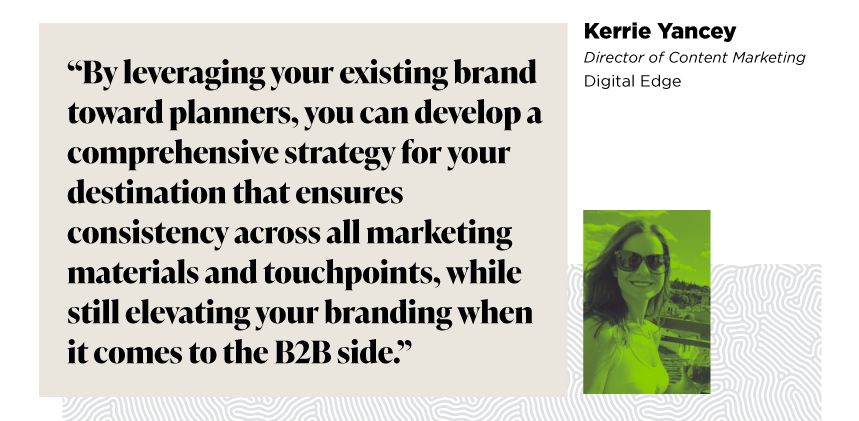
4. Not Utilizing Segmented Campaigns
As we touched on in the previous meetings marketing no-no, not every message works for every audience — and this goes for meeting planners, too. Awareness campaigns are great for getting the word out about your destination’s meetings offerings. But don’t forget to utilize segmented campaigns that focus on the different needs of different planning professionals. Implementing account-based marketing (ABM) strategies allows you to target a segmented group rather than a broad one — and can increase conversions by 14%, according to Gartner. Digital Edge can help identify different segments for your destination, develop strategies and focus messaging.
5. Putting Sparkle Before Specs
As meeting professionals look for more immersive experiences with sparkle that attract attendees, it can be easy to lose focus of what really matters to these planners: the specs. Planners have told Digital Edge that they find convention center information and meeting hotel listings the most valuable information on a destination organization’s website. They want the meetings package facts and figures so they can clearly understand size, scope and access.
6. Defaulting to All Platforms
This tip comes from our Media Team: Pick the right marketing platforms; not all platforms play best for every industry. We’re all for repurposing content — turn that new blog into a video! But where do you want to post that marketing content beyond your website? To determine which networks are right for you, you need to clearly identify your audience, your goals and objectives and what features you need (for example, different platforms also have different targeting options). And, don’t rely on just trade media to reach the planner audience in today’s diverse, digital world.
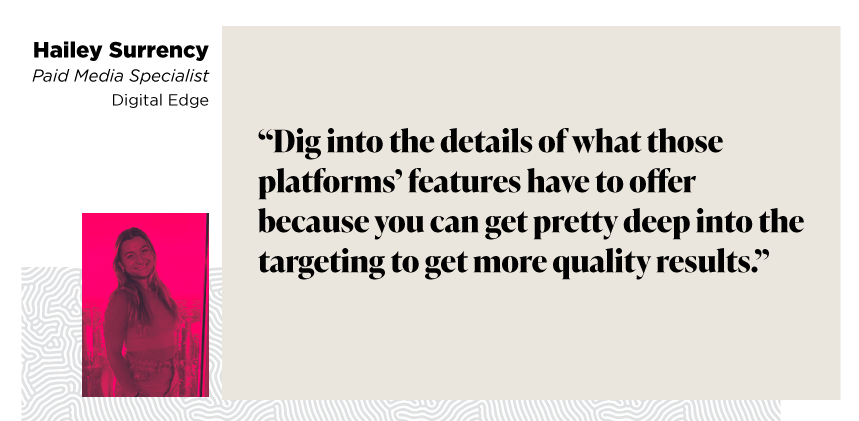
7. Using Ineffective Imagery
This no-no might sound vague, but that’s only because so much falls under the “effective imagery” umbrella. Creative that catches eyes is crucial to your meetings marketing — from social media posts to print ads.
So, you do NOT want to show in photos and videos?
- Empty meeting rooms
- Couples
- Children (unless you’re running a group tour or youth sports campaign)
- Imagery that doesn’t match the accompanying copy
What DO you want to show?
- Action shots of people doing things (clinking glass at a rooftop networking reception or going on a group bike tour)
- The eccentricities of your destination — the beyond-the-boardroom experiences for meeting attendees
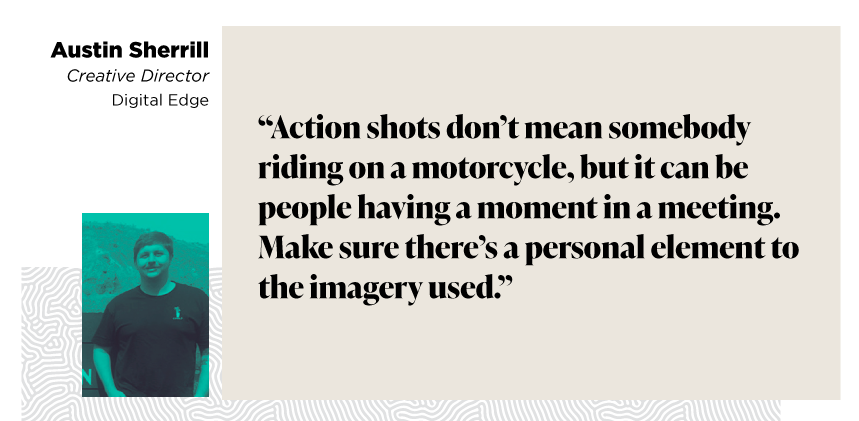
Another key tip from the #DigiBunch: Make sure you’re using high-resolution photos and video.
8. Changing Campaign Messaging Too Frequently
This tip comes from one of our industry experts, VP of Marketing Strategy Jaimie Hart, who has over a decade of experience as a marketing professional in tourism, hospitality and events. Her advice: Don’t change your campaign messaging too frequently. When you take on any marketing initiative, make sure it has longevity and purpose — and not just a good idea. A good idea is just the beginning. Make sure there’s a strategy behind it. There are ways to avoid ad fatigue without throwing out an effective message that supports your brand and speaks to your audience.
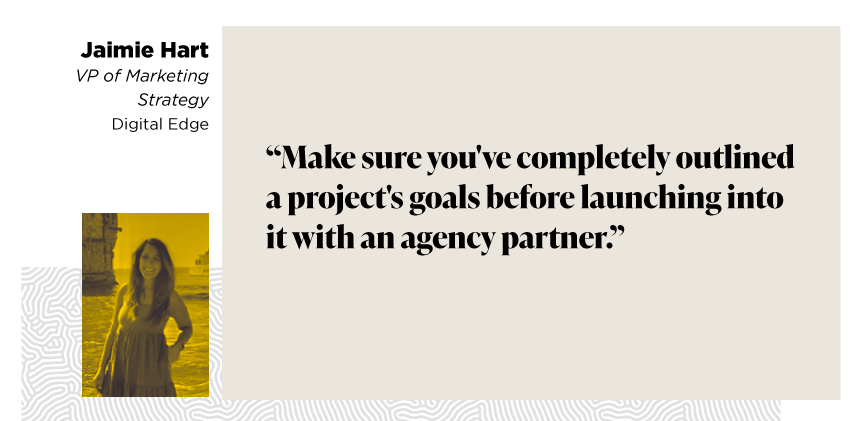
9. Not Leaning on Industry Expertise
While it’s important for travel & tourism organization’s marketing & sales teams to work together, it’s also important to nurture agency relationships. Don’t treat your agency partners like an item on your to-do list or give them a to-do list. Collaborate more and lean on their expertise. You should also lean on the expertise of industry leaders, like Destinations International, which provides tools, research and certification programs.
